- leun's home page
- Posts
- 2013
- 2012
- December (2)
- October (3)
- September (2)
- August (1)
- July (4)
- June (4)
- May (2)
- April (3)
- March (5)
- February (5)
- January (5)
- 2011
- December (3)
- November (3)
- September (5)
- August (2)
- July (2)
- June (3)
- May (4)
- April (4)
- March (2)
- February (4)
- January (2)
- 2010
- December (2)
- November (3)
- October (3)
- September (5)
- August (6)
- July (2)
- June (4)
- May (3)
- April (4)
- March (4)
- February (2)
- January (4)
- 2009
- 2008
- October (1)
- My blog
- Post new blog entry
- All blogs
Run6 Single Photon Test
Should We Try Run6 FPD Single Photon AN?
I think it's fair to say that the run 6 east FPD data is in a very good shape. We can do pi-gamma separation very well. We know the cross-section for pi0 and eta, and we know their asymmetry. We have the calibration down pretty well. The cross-section result even agrees with the prediction, which may come in handy if we want to do the photon.
I've looked at the signal fraction for the direct photon in the full simulation. It has an obvious problem that the eta-pi0 ratio is screwed up, and we have no idea if the prompt photon cross-section makes any sense, but it's still worthwhile to look at. I have not pu any weights on anything.
Fig. 1. Prompt photon signal fraction for E>50GeV, as a function of photon coordinate (Beam on the left)

It seems that the sweet spot for photon is centered around eta=3.55, rather than 3.65 as the usual center cut.
Fig. 2. Signal contribution vs. E for the usual center cut. (eta=3.65, r=0.15)
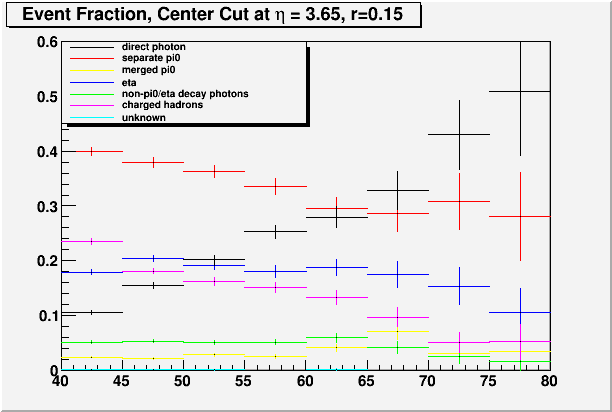
Fig. 3. Signal contribution vs. E for center cut v2. (eta=3.55, r=0.1)
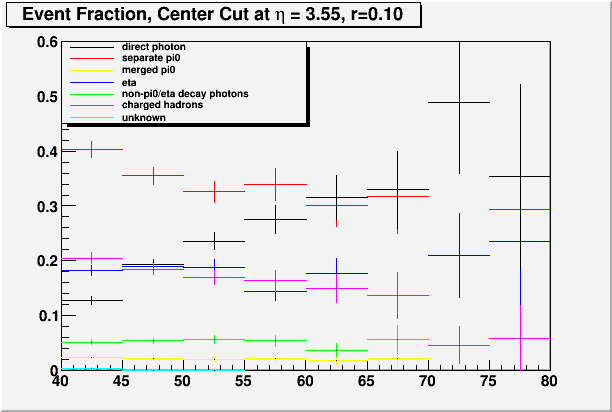
The real problem here is the fragmentation photons. Apparently, Pythia does not simulate the FG at all, it seems. All photons in Pythia are coming from some hadronic decay, or they are prompt. So we don't know their cross-section, and we don't know their asymmetry.
But in any case, now we look at the analyzing power of the single photon cluster, with no correction. By "gamma", we mean simply the photons from clusters that were determined to be single photon clusters.
Fig. 4. AN vs. xF for the normal center cut
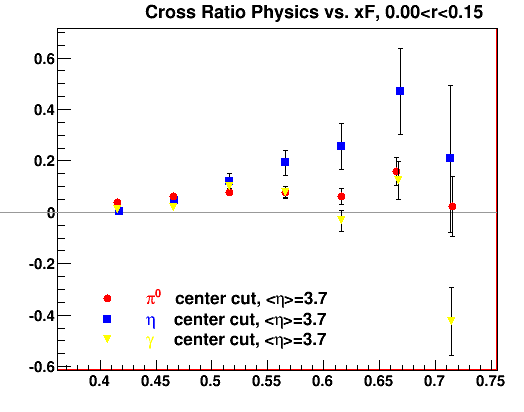
Fig. 5. Now with center cut still centered at eta=3.65, but radius reduced to 0.1
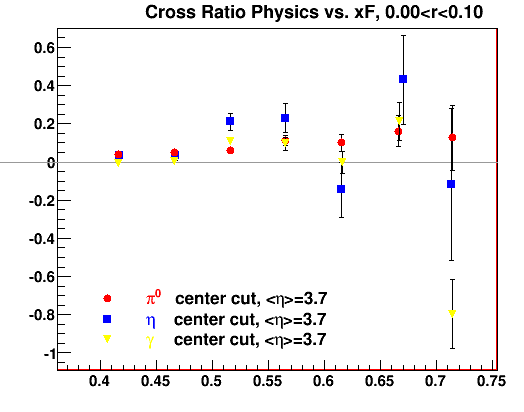
Fig. 6. With center cut centered at eta=3.55, and radius r=0.15

Fig. 7. With center cut centered at eta=3.55, and radius r=0.1
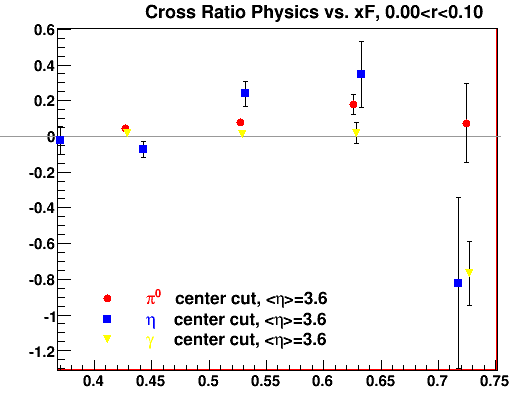
So what do we expect to see based on theory?
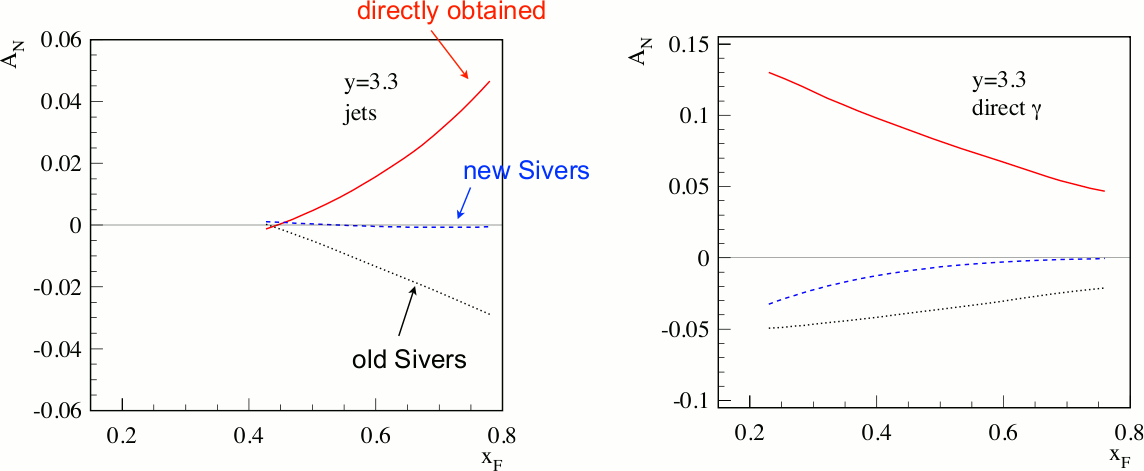
That depends on how we interpret the famous "sign mismatch" issue. Our pi0 and eta asymmetry are in the SIDIS direction, whereas the theorists think that Sivers / qqg-correlation twist-3 should yield DY direction in pp->hX. My understanding on this issue is that,
1. Theorists are wrong on the direction, either because there is a node in kT structure of Sivers function and their extraction of twist-3 function from the kT moment of SIDIS Sivers is wrong, or because there is a node in X structure of Sivers and we are probing different region of X compared to SIDIS.
2. Theorists are right, but we are dominated by something else, like Collins, for pi0 and eta that cancel out the Sivers.
Either way, they now think that jets and prompt photons should have asymmetry in the same direction. So, IF we knew that the fragmentation photons have small to no Collins, so that their asymmetry is a good surrogate for the jet asymmetry, then we don't even really care if our photon is fragmentation or prompt for the purpose of checking the sign of the Sivers type asymmetry. But we don't know that. So we don't know what the FG asymmetry should be AT ALL, and it seems that it would be very difficult to interpret the single photon asymmetry.
- leun's blog
- Login or register to post comments
